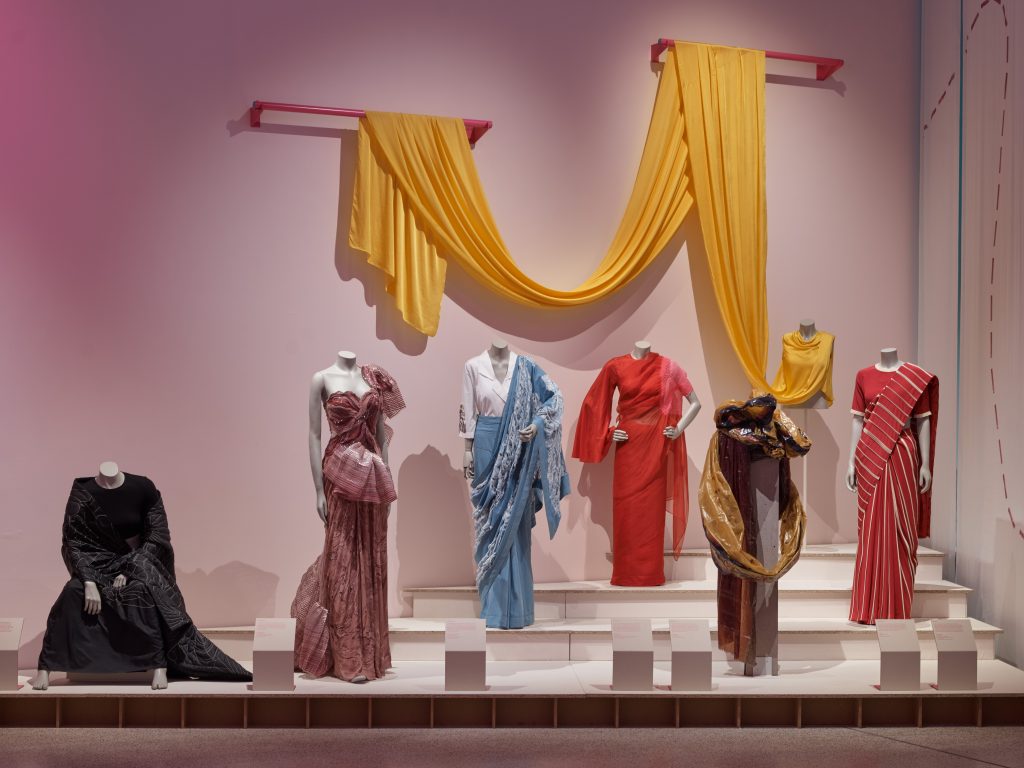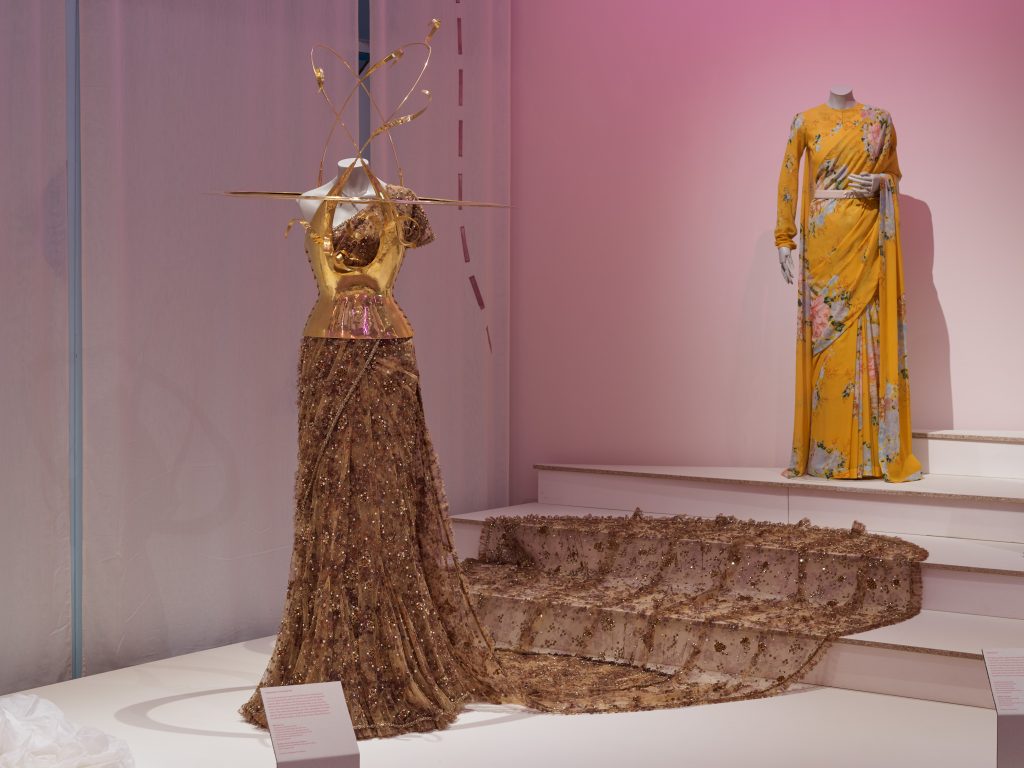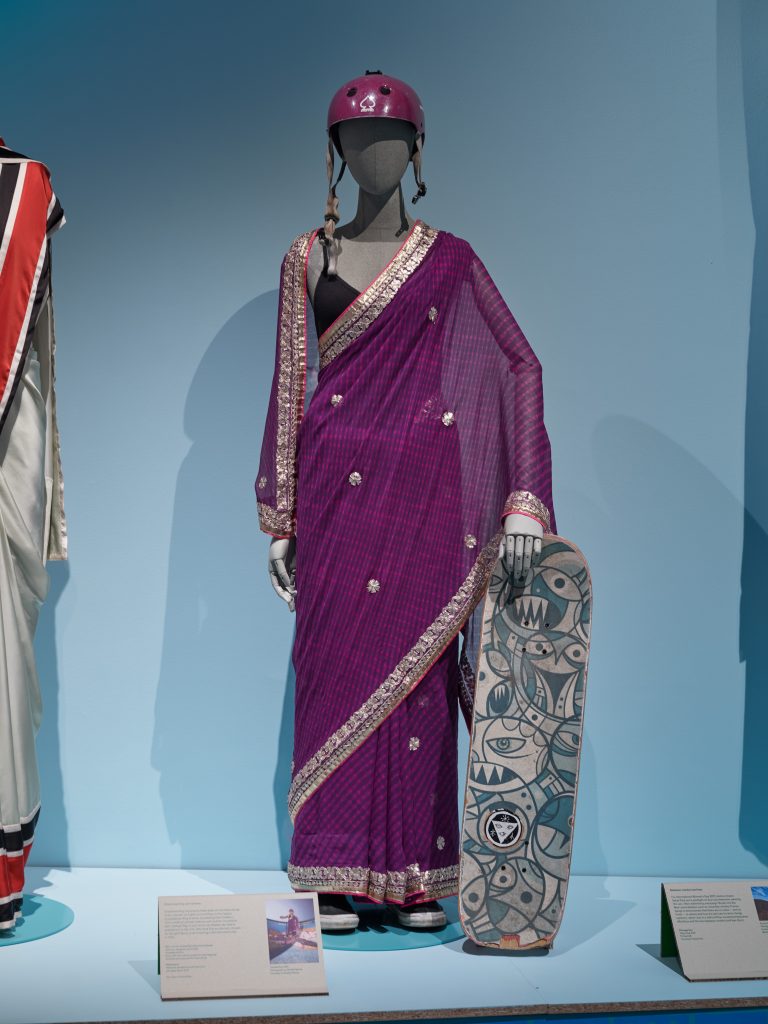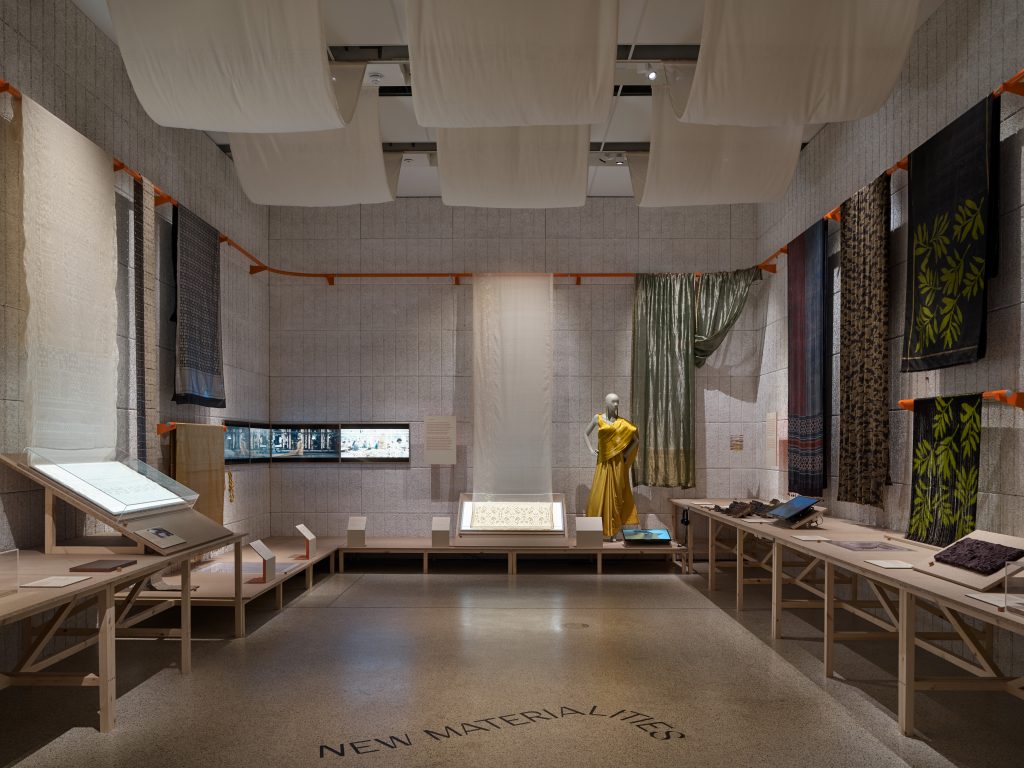The Offbeat Sari
The sari – which has enduring appeal and is ubiquitous across India and South Asia today – has experienced a radical 21st century overhaul. The Design Museum will explore this reinvention in their summer exhibition, shedding a rare spotlight on contemporary Indian fashion for UK audiences.
The Offbeat Sari, opening in May, will be the first large-scale exhibition in the UK to focus on the contemporary sari in India. It is curated by the Design Museum’s Head of Curatorial Priya Khanchandani. The show will bring together over 90 examples of trailblazing saris made over the past decade, nearly all of which will be on loan from designers and studios across India and have never been seen in Britain before. Through the textures, weaves, colours and drapes of these beautiful textiles, visitors will experience a unique snapshot of the fashion revolution the sari is experiencing right now.
Conventionally a single piece of unstitched fabric, the sari is inherently fluid. Adapted in drape and form over millennia, it reflects identity, social class, taste and function across time and geography, and remains an enduring part of life in India today. Yet in recent decades, for many, the sari has been considered traditional, or uncomfortable as a form of everyday clothing, especially by young people.
But now the sari has been reenergised. The Offbeat Sari exhibition will show how designers, wearers and craftspeople are reshaping the ways in which the sari is understood, designed, made and worn in contemporary urban India. It will present the sari as a site for design innovation, an expression of identity and resistance, and a crafted object carrying layers of new materialities.
The sari has today been elevated as a fashion item and has emerged as a canvas for contemporary trends and attitudes. Designers in India are experimenting with hybrid forms such as sari gowns, pre-draped saris, and innovative materials such as steel. Wearers are embodying the sari as a vessel for dynamism rather than pageantry. Individuals are wearing the sari as an expression of resistance to social norms, and activists are embodying it as an object of protest. Young people in cities – who previously associated the sari with dressing up – can now be found wearing saris and sneakers on their commutes to work.
On display will be a carefully chosen selection of saris by exciting designers of varied scale, from growing global brands to emerging studios. These include delicate work of designers such as Abraham & Thakore, Raw Mango, Akaaro and NorBlackNorWhite, who have been at the cutting edge of the sari’s dynamic shift and renewed relevance. Visitors will also
see saris that experiment with materials and form by designers like Amit Aggarwal, HUEMN, Diksha Khanna and Bodice. Examples of couture saris such as Tarun Tahiliani’s foil jersey sari for Lady Gaga (2010) and Abu Jani Sandeep Khosla’s ruffled sari worn by Bollywood star Deepika Padukone at Cannes Film Festival in 2022, in addition to work by Sabyasachi and Anamika Khanna, will exemplify the sari’s full potential for extravagance. Alongside them will be a range of styles seen on the streets of Mumbai, Delhi, Bangalore and beyond, showing how young women in cities are embracing the sari anew.
A significant highlight will be the first ever sari worn at the famed Met Gala at the Metropolitan Museum of Art in New York. Designed by Sabyasachi, and styled with a gold Schiaparelli bodice, the stunning ensemble was worn by Indian businesswoman and socialite Natasha Poornawalla, and made headlines around the world in May 2022 for its dramatic mix of Indian and Western couture. At the time, designer Sabyasachi Mukherjee said “I interpreted the dress code, Gilded Glamour, with an Indian gaze that revels in our multiculturalism and the authenticity of our design, aesthetic and craft legacies.” This is the first time it will have been seen in Britain, and only the second time the ensemble will have been displayed in a museum exhibition, after being shown in Monaco last summer.
The exhibition will unfold in three main sections:
Transformations will highlight the work of the designers in India who have fuelled the experimentation of recent years, by pushing the boundaries of the sari through the creation of new genres and embracing it as an object of playful expression. Highlights include a sari adorned with sequins cut from disused X-ray images obtained from hospital waste and by Abraham & Thakore, a distressed denim sari by Diksha Khanna, and a lacquered sari drape wrapped around a plinth in a form of conceptual play on the sari by contemporary artist Bharti Kher. It also explores the work of conceptual designers who have used the sari as their canvas and created innovative forms such as the stitched sari dress and includes a series of films showcasing the varied sari drapes of India by Border&Fall.
Identity and Resistance will examine the role of the wearer in reforming the sari today and will exhibit how the sari can become a vessel for conveying individual identities, with a focus on India within the broader context of South Asia and as among the diaspora. Visitors will see the immense capacity of the sari to reflect a diverse range of voices and personas, how it can empower the female body, and a how it enables individual identities to flourish. This will be shown through examples such as the red silk sari worn by Tamil-Swiss singer-songwriter Priya Ragu, a block-print sari worn by self-proclaimed ‘Saree Man’ Himanshu Varma and the ‘Arch’ sari by Adavid styled with a shirt by Bangladeshi architect and advocate for body positivity Sobia Ameen. There will also be saris worn as a tool for protest, with examples of those worn by female demonstrators in rural India such as The Gulabi Gang and The Hargila Army.
New Materialities will look closely at the at the sari as a textile. It will show how the sari’s weave, texture, colour and surface form a rich canvas for the incredible creativity of craftspeople. It will show how makers and designers work symbiotically across a range of techniques, materials and stimuli to transform ways of making in the 21st century. This section will draw upon India’s profound textile histories and its futures, spotlighting the intricacy of sari textiles, from weaves, patterns and colours to surface embellishment. An important example on show will be a sari by Rimzim Dadu employing hair-thin stainless steel wires to create a gold sculpted wave.
Images photographed by Andy Stagg for Design Museum.




